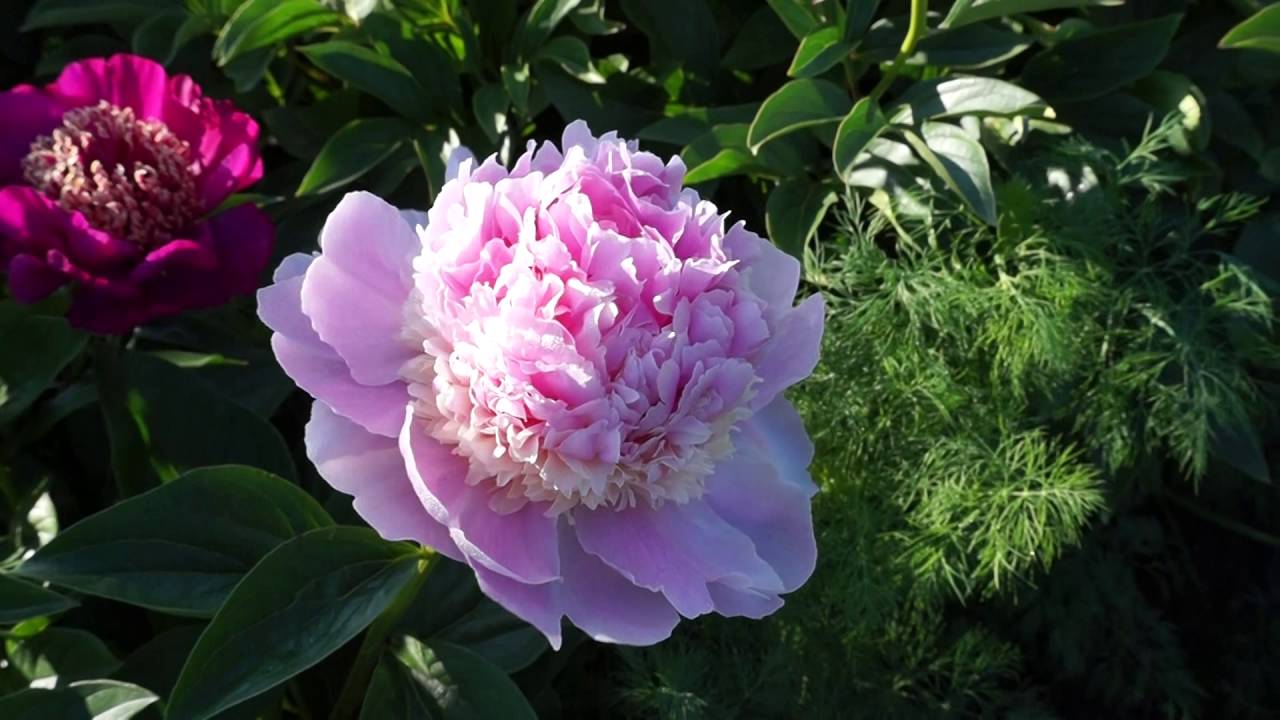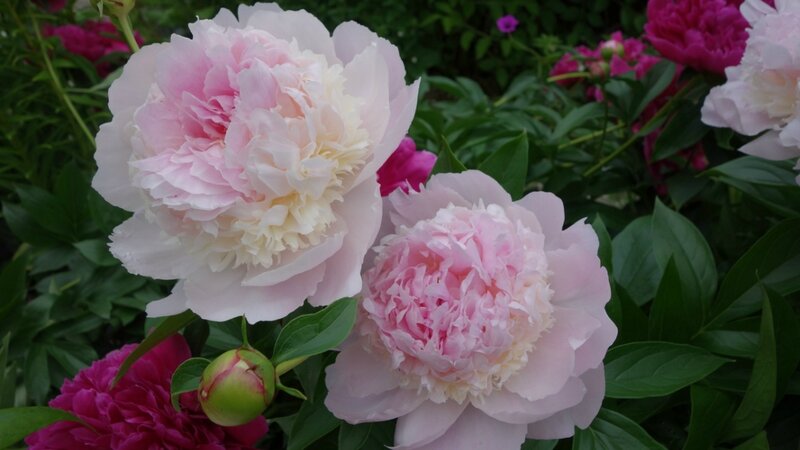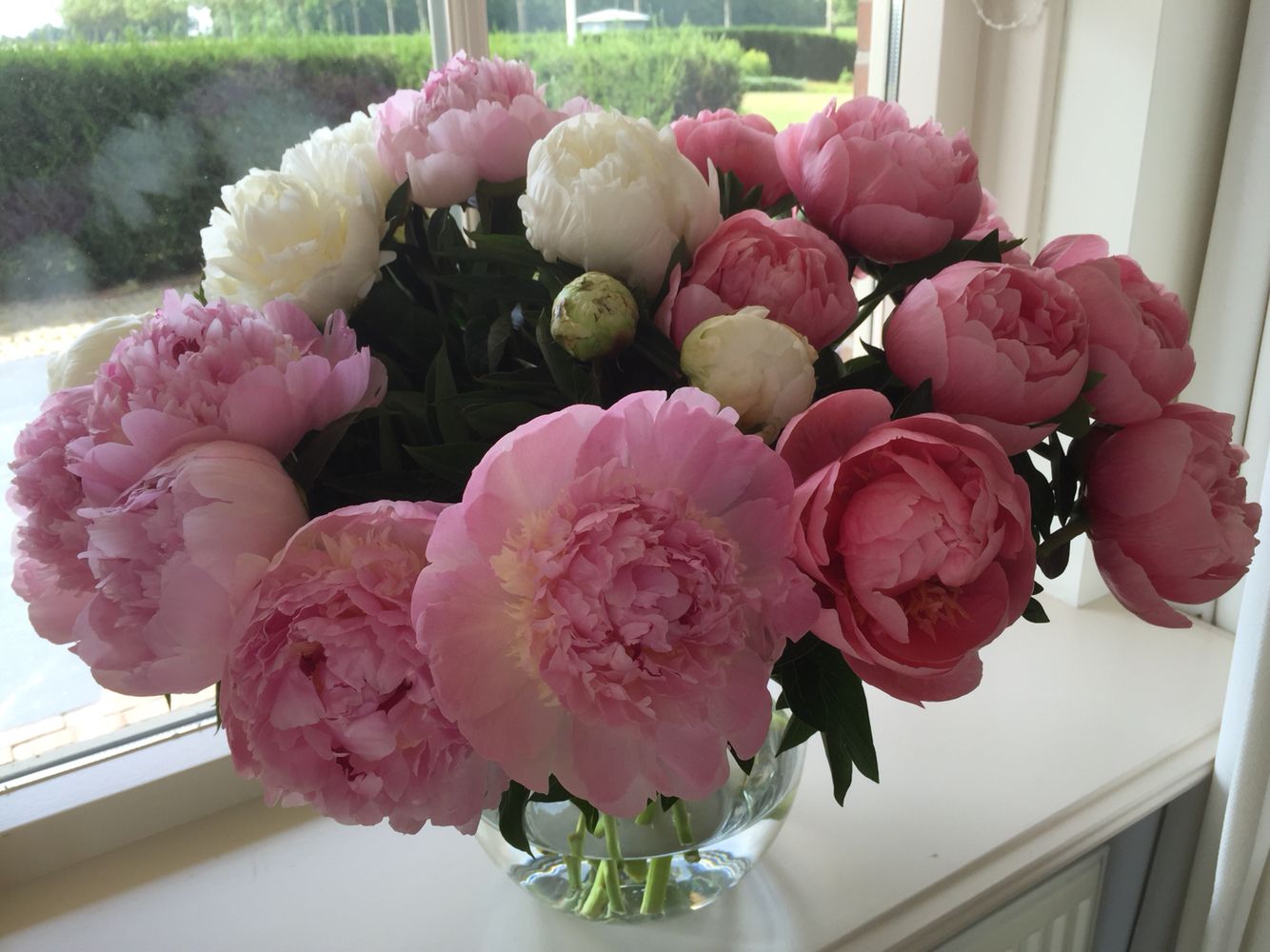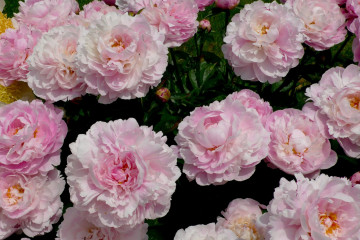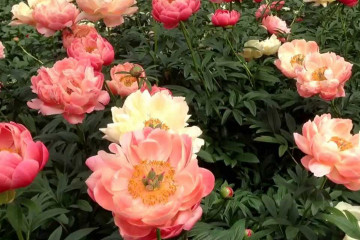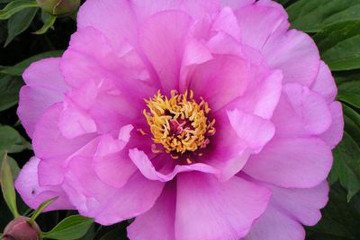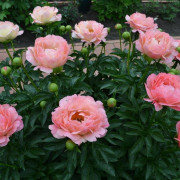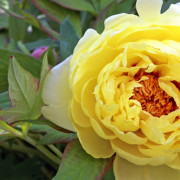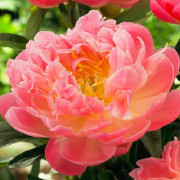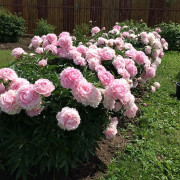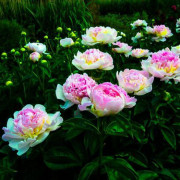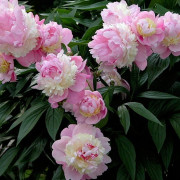Peony Angel Cheeks (Paeonia Angel Cheeks) - characteristics of the variety
Content:
Delicate pink terry peony Angel Cheeks is a real work of art in floristry and selection. The neat core is woven from many small curls, which are collected in a bed of large lower petals and enveloped in a delicate aroma. Peony is resistant, not prone to phyto-infection and unpretentious to keeping conditions. Graceful flowers will become a real decoration of the garden and the basis of magnificent bouquets.
Peony Angel Cheeks (Paeonia Angel Cheeks) - history and features of the variety
Angel Cheek peonies were bred in 1970 in the USA, the author of the variety is Klehm. Flowers with a playful and symbolic name represent a special milky-flowered subspecies in a delicate range - strictly pink with a soft cream edging. The bud is composed of large, smooth outer petals and a two-tiered core: the lower layer is white, and the upper layer is pink. In diameter, the flowers reach 18 cm, and the height of the peduncle is about 70 cm.
The plant is herbaceous, perennial, grown in gardens and greenhouses, used in landscaping and commercial purposes. In the middle lane, it blooms in May and retains its beauty and freshness for a long time. Since such peonies do not bush, but produce single stems, they are planted along the edge of paths or in curly flower beds to decorate garden and park areas.
The advantages of the variety are a strong peduncle and juicy neat leaves, a single flowering, a dense and elastic bud, which almost does not crumble and can be used for decorative purposes even without a stem. The plant practically does not have to be tied up. A big plus of the variety is its resistance to diseases and invasions of parasites. Gardeners note that ants and aphids practically do not attack the Angel Cheeks peony.
Growing up: planting in open ground
Peony Angel Chicks can be propagated by both seed and root methods. A hardy plant is planted in open beds; it does not need greenhouse conditions. A simple method that is suitable even for amateurs is grafting. It is used not only for reproduction, but also for plant rejuvenation.
To carry out the landing, you must:
- Dig up a mature donor plant (stems with herbs must be cut).
- Divide its overgrown rhizome into cuttings, each must have live buds.
- Clear cuttings from young weak shoots, dry shoots.
- Soak the planting material in a specialized fungicide or a weak manganese solution.
- Dig in the dried cuttings in the prepared beds.
In the first year, such bushes will give only greens - they will need time to acclimatize in a new place. But after 2-3 years, with careful care, the first buds will appear, fully corresponding to the description of the variety.
The optimal time for transplanting a flower is August and early autumn, while it is warm. In southern latitudes, cuttings can be carried out until November, if the temperature does not drop below + 15 ° C. The spring transplant is done in April - early May at medium temperatures, until the flowering period approaches.
Site preparation and step-by-step instructions for planting peonies
Herbaceous peonies love loose, neutral soils and well-lit areas.Temporary shaded beds located on a hill are ideal. In wet areas, before planting in the hole, it is imperative to create drainage so that the water does not stagnate at the root. A good pinch of ash is also needed to equalize the pH of the soil.
Peonies are planted at least 30 cm apart, the flower needs space. The ideal option is to maintain a diameter of 90-100 cm, where the soil is regularly loosened and weeded from weeds. The drainage layer should be 10-15 cm, expanded clay and large crushed stone can be used as a gasket.
Before immersing the cuttings, the soil must be moistened, 2 cups of ash, fungicide and nutrient fertilizer must be added. It is best to use humus. The material is then immersed in loose soil at surface level so that a viable bud can breathe and sprout.
The seed propagation method is used only by professional florists and gardeners, since this process takes at least 7-8 years before powerful flowering bushes appear.
Plant Care Angel Chicks
Paeonia Angel Cheeks is an unpretentious plant, therefore, it does not require careful maintenance. In order for the bushes to bloom and smell, it is enough to follow the basic rules of growing:
- water moderately, without flooding or tormenting the plant with thirst;
- loosen the soil and eliminate weeds;
- provide shelter in drought and cold weather;
- fight pests and feed the soil;
- trim dry branches, remove heads after flowering.
Angel peony does not need frequent watering. It is enough to occasionally moisten it intensively - at least 3 buckets under a mature bush, and prevent drying out and crusting on the soil surface. You need to feed the plant with potassium and organic matter throughout the entire flowering season, in the spring - with nitrogen to bloom lush greenery, and in August - with phosphorus to prepare the roots for the cold weather.
You need to loosen the ground within a radius of 30 cm around the flower after each watering. In dry years, you can use mulch made from hay or sawdust to control the drying out of the soil. In addition, it is necessary to cover the seedlings before winter, but be sure to release them in the spring when the snow melts. In warm winters, it is better not to cover the root system in order to prevent decay.
Peony Blossom Angel Cheeks
The period of activity of the Angel Chicks peony is considered the time from spring awakening to the end of a long flowering, after which the plant calms down, restoring strength. The angelic variety belongs to the mid-season, that is, the buds are tied and bloomed not very early.
Before flowering, in order for the plant to gain strength, humus, potassium and nitrogen are introduced into the soil, it must be watered and loosened well. A flowering plant can be treated for aphids, but according to gardeners, the nectar of this variety does not attract ants and other insects.
If a mature peony (from 3 years old) does not bloom, you should pay attention to the conditions for its growth. Corrective measures:
- With an abundance of greenery, several deciduous shoots are truncated, and the next season, nitrogenous fertilizing is reduced.
- Transfer the plant to lighter areas.
- Prevention of the occurrence of fungal diseases and the appearance of rot on the roots is carried out.
- Increase watering, loosen the soil more thoroughly.
- Increase the distance between the holes.
- Rejuvenate the bush by grafting.
Peonies after flowering
The faded heads are cut off, and the bed is cleaned of dry debris. The stems should be left green by 2/3, and the cut should be treated with charcoal. In August-September or later, it is necessary to prune the bush to prepare it for wintering. Above the ground level, no more than 10 cm of shoots are left. Old plants that produce low-quality flowers are cut or moved to more profitable areas.
Diseases, pests and ways to control them
The angelic peony, although it is distinguished by its resistance and special immunity to insect attacks, remains susceptible to root rot, rust and other diseases. That is why the plant should not be poured. It must be periodically treated with a fungicide and all debris obtained after cutting and flowering must be burned.
Peony Angel Chicks is an unpretentious and sophisticated decoration for the garden and an excellent component for delicate bouquets.


